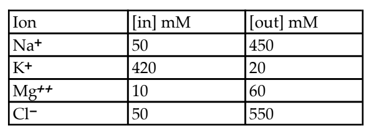Formation of new memories involves the ________, and storage of long-term memories primarily involves the ________.
A. cerebellum; corpus callosum
B. hippocampus; association areas of the cerebrum
C. lateral ventricles; hippocampus
D. amygdala; reticular formation
E. habenular nuclei; amygdaloid body
Answer: B
You might also like to view...
Generally, a chemical buffer is described as
A. a strong acid or strong base that brings the pH of a solution to 7.0. ?B. a weak acid and weak base that help prevent big changes in pH.? C. a neutral molecule that does not influence the pH in any way.?D. a weak acid that makes a solution slightly more basic by its presence.
Though you are an attentive parent, you lost track of your inquisitive toddler for a few minutes, just long enough for him to wander into the garage and open a package of insecticide that you use to control insects in your garden. You have no idea if any of the poison has been ingested, inhaled, or absorbed through his skin. You take the package away from your child and read under the "caution"
section that it is an anticholinesterase. Given that this poison was made for insects, not humans, should you be worried? Explain your answer. What would happen to the child if he has indeed been affected? Explain which type of synapses could be affected. Propose an antidote (it's OK if you don't remember a specific compound, just describe what type of effect may reverse the effects of the insecticide).
You and your fellow deep-sea scientists have discovered a new form of marine invertebrate, and are anxious to determine the similarities and differences to animals already characterized. Chemical analysis reveals the following concentrations of permeable cations:

Nernst equation: Eion = 61/z × log [ion]out/[ion]in
Cells that help to regulate the immune response are _________.
A) NK cells. B) B lymphocytes. C) plasma cells. D) helper T cells. E) cytotoxic T cells.
Which is not part of the respiratory membrane?
A. Capillary endothelium B. Plasma membrane of Type II cell C. Plasma membrane of Type I cell D. Fused basement membrane